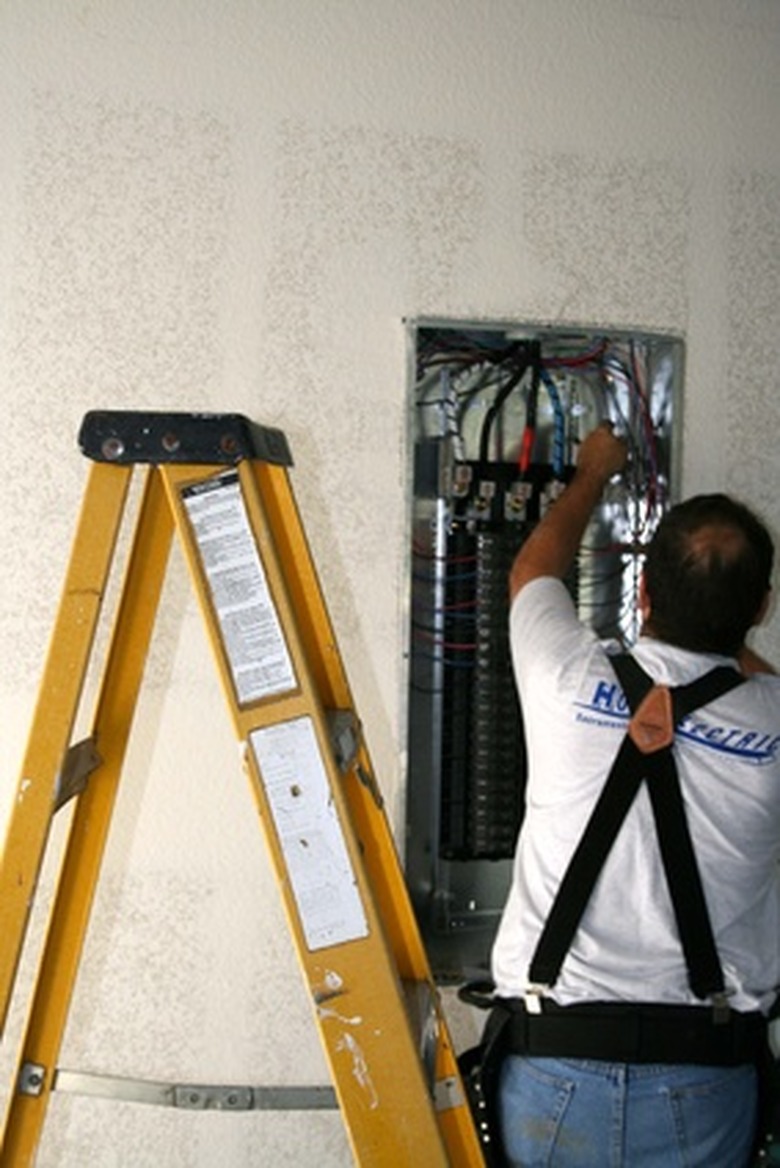How To Check For An Electrical Circuit Overload
Warning
Always exercise safety precautions when working around electrical wiring. Do not touch a circuit breaker, fuse or wire with damp hands or when standing in water. Do not touch any exposed wires.
An overload occurs when the current running through an electrical circuit exceeds safe levels, usually due to an unexpected power surge or running too many appliances on the same circuit. Circuits usually have fuses or breakers that automatically cut off current flow to an overloading circuit to prevent damage and fires. Verify that an overload has occurred by checking the status of your circuit panel and performing a few simple tests to determine what caused the breaker to trip.
Step 1
Turn off all appliances and wall switches and unplug all lamps and appliances plugged into the circuit.
Step 2
Locate the circuit panel, often found in the basement or garage of most homes. Check if any of the switches in the panel have tripped or partially tripped. Attempt to reset any tripped switches by turning them off and then on. If you cannot reset one of the switches, the corresponding circuit may have a short in a receptacle or switch.
Step 3
Power on the wall switches one at a time for the circuit being tested. If turning on one of the switches trips the circuit breaker, the fixture or receptacle for that switch has a short circuit. If you can turn on every switch without tripping the breaker, there may be a problem with one of the appliances in the circuit.
Step 4
Plug in and turn on the appliances on the circuit one at a time. If plugging in one of the appliances trips the circuit, there may be a problem with the cord or plug. If turning on one of the appliances trips the circuit, there may be a problem with with the appliance itself or you may be running too many appliances on the circuit. Try running the appliance on another circuit to determine whether it is defective.
Step 5
Switch on all appliances in the circuit. If this does not trip the circuit, there was most likely a temporary power surge or an overload caused by an appliance temporarily increasing its power demand.
